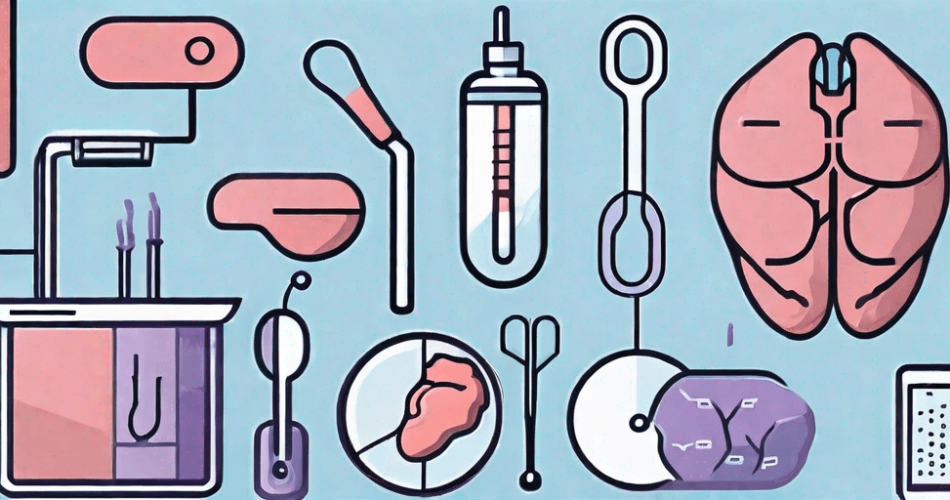Cirrhosis of the Liver is a condition that affects the liver and can have serious implications on overall health. It is important to understand the symptoms, causes, and management strategies for this condition in order to promote early detection and effective treatment. In this article, we will provide a comprehensive overview of Cirrhosis of the Liver for beginners seeking fundamental knowledge.
Understanding Cirrhosis of the Liver
Cirrhosis is a chronic liver disease characterized by the replacement of healthy liver tissue with scar tissue. This scarring prevents the liver from functioning properly and can lead to various complications. Understanding the basics of this condition is crucial in identifying potential symptoms and seeking appropriate medical attention.
What is Cirrhosis?

Cirrhosis is a progressive condition that develops over time. It occurs when long-term and continuous damage to the liver leads to the formation of scar tissue. This scar tissue replaces healthy liver cells, impairing the liver’s ability to function properly. If left untreated, cirrhosis can result in liver failure. That’s why seeking help from an expert about this condition is a must.
The Liver’s Role in the Body
The liver is an essential organ responsible for numerous vital functions in the body. It helps to detoxify harmful substances, stores vitamins and minerals, produces bile to aid in digestion, and metabolizes drugs and alcohol. When the liver is affected by cirrhosis, these normal functions are compromised.
One of the liver’s key functions is detoxification. It acts as a filter, removing toxins and harmful substances from the bloodstream. Without a properly functioning liver, these toxins can accumulate in the body, leading to a variety of health issues.
In addition to detoxification, the liver also plays a crucial role in storing essential vitamins and minerals. It stores vitamins A, D, E, and K, as well as iron and copper. These stored nutrients are released into the bloodstream when needed, ensuring the body has a constant supply of these vital substances.
Bile production is another important function of the liver. Bile is a greenish-yellow fluid that helps break down fats during digestion. It is produced by the liver and stored in the gallbladder. When we consume fatty foods, the gallbladder releases bile into the small intestine, where it aids in the digestion and absorption of fats.
Metabolizing drugs and alcohol is yet another crucial role of the liver. When we consume medications or alcohol, the liver breaks them down into substances that can be easily eliminated from the body. However, in the case of cirrhosis, the liver’s ability to metabolize these substances is impaired, leading to potential complications and adverse effects.
Understanding the liver’s normal functions helps us grasp the impact of cirrhosis on the body. When scar tissue replaces healthy liver cells, these vital functions are disrupted, leading to a cascade of health problems.
Identifying the Symptoms of Cirrhosis
Recognizing the symptoms of cirrhosis is crucial for early detection and timely intervention. The condition often progresses slowly, and symptoms may not appear until significant damage has already occurred. However, being aware of the signs can help individuals seek medical attention promptly and potentially slow down the progression of the disease.
When it comes to identifying the symptoms of cirrhosis, it’s important to understand that the liver plays a vital role in the body’s overall functioning. It performs various essential functions, including filtering toxins from the blood, producing bile to aid in digestion, storing vitamins and minerals, and metabolizing medications. As cirrhosis develops, the liver becomes scarred and loses its ability to function properly, leading to a range of symptoms.
Early Signs of Liver Cirrhosis
In the early stages of cirrhosis, individuals may experience symptoms such as fatigue, weakness, loss of appetite, and weight loss. These early signs may be subtle and often go unnoticed or are attributed to other causes. However, they serve as important indicators that warrant further investigation.
When fatigue and weakness become persistent and interfere with daily activities, it may be a sign that the liver is not functioning optimally. Loss of appetite and unintended weight loss can also be early warning signs of cirrhosis. These symptoms occur because the liver’s ability to process nutrients is compromised, leading to a decrease in energy levels and a reduced desire to eat.
Advanced Symptoms of Cirrhosis
As cirrhosis progresses, more noticeable symptoms may become apparent. These can include jaundice (yellowing of the skin and eyes), abdominal swelling, itching, dark urine, pale or clay-colored stools, easy bruising or bleeding, and mental confusion. It is important to seek medical attention if any of these symptoms arise.
Jaundice, one of the most recognizable symptoms of cirrhosis, occurs when the liver is unable to effectively process bilirubin, a yellow pigment produced during the breakdown of red blood cells. As a result, bilirubin builds up in the body, causing a yellowing of the skin and eyes. Abdominal swelling, also known as ascites, is another advanced symptom of cirrhosis. It occurs when fluid accumulates in the abdominal cavity due to increased pressure in the liver’s blood vessels.
The itching experienced by individuals with cirrhosis is often a result of bile salts accumulating in the skin. Dark urine and pale or clay-colored stools are indicative of liver dysfunction, as the liver is responsible for processing and excreting waste products. Easy bruising or bleeding can occur due to a decrease in the liver’s production of clotting factors. Lastly, mental confusion, known as hepatic encephalopathy, can arise when the liver is unable to remove toxins from the blood, leading to their accumulation in the brain.
It is important to note that the presence of these symptoms does not necessarily confirm the presence of cirrhosis, as they can also be associated with other medical conditions. However, if you experience any of these symptoms, it is essential to consult a healthcare professional for a proper diagnosis and appropriate treatment.
Uncovering the Causes of Cirrhosis
Several factors can contribute to the development of cirrhosis. Understanding the underlying causes is essential in managing the condition effectively and preventing further liver damage. The two main categories of cirrhosis causes are alcohol-related and non-alcoholic causes.

Alcohol and Cirrhosis
Alcohol-related cirrhosis is a progressive disease. It typically develops over many years of heavy drinking. The liver, being responsible for metabolizing alcohol, is particularly vulnerable to its toxic effects. Chronic alcohol abuse can lead to alcoholic hepatitis, a condition characterized by inflammation and swelling of the liver. If left untreated, alcoholic hepatitis can progress to cirrhosis.
Chronical Viral Hepatitis
Chronic viral hepatitis is a major non-alcoholic cause of cirrhosis. Hepatitis B and C viruses can infect the liver and cause chronic inflammation, leading to liver damage and the development of cirrhosis over time. These viral infections are usually transmitted through contaminated blood or body fluids. Effective prevention measures, such as vaccination and safe injection practices, can help reduce the risk of viral hepatitis and subsequent cirrhosis.
Fatty Liver Disease
Fatty liver disease, also known as non-alcoholic fatty liver disease (NAFLD), is another common non-alcoholic cause of cirrhosis. It is characterized by the accumulation of fat in the liver, which can lead to inflammation and scarring. NAFLD is often associated with obesity, insulin resistance, and metabolic syndrome. Lifestyle modifications, including weight loss, regular exercise, and a healthy diet, are key in managing and preventing the progression of NAFLD to cirrhosis.
Autoimmune Disease
Autoimmune diseases, such as autoimmune hepatitis and primary biliary cholangitis, can also result in cirrhosis. These conditions occur when the immune system mistakenly attacks the liver cells, causing inflammation and damage. Early detection and appropriate treatment are crucial in managing autoimmune liver diseases and preventing cirrhosis.
Genetic Disorder
In addition to the aforementioned causes, certain genetic disorders, such as hemochromatosis and Wilson disease, can predispose individuals to cirrhosis. These conditions affect the liver’s ability to metabolize and store certain substances, leading to their accumulation and subsequent liver damage. Genetic testing and counseling can help identify individuals at risk and guide appropriate management strategies.
Diagnosing Cirrhosis of the Liver
The diagnosis of cirrhosis involves a comprehensive evaluation of the individual’s medical history, physical examination, and various laboratory tests and imaging studies. Prompt and accurate diagnosis is crucial in order to determine the extent of liver damage and guide the management approach.
Medical History and Physical Examination
During the medical history assessment, the healthcare provider will inquire about any symptoms experienced, past medical conditions, alcohol consumption, and potential exposure to risk factors. A physical examination may reveal signs such as an enlarged liver, jaundice, or fluid accumulation in the abdomen.
Laboratory Tests and Imaging
Laboratory tests play a crucial role in the diagnosis and monitoring of cirrhosis. Blood tests can detect liver enzyme levels, evaluate liver panel results, and check for the presence of viral hepatitis. Imaging techniques such as ultrasound, CT scan, or MRI can provide detailed images of the liver, helping to assess liver size, identify scar tissue, and detect any abnormalities.
Management Strategies for Cirrhosis
While cirrhosis is a chronic condition that cannot be cured, effective management strategies can help slow down the progression of the disease, alleviate symptoms, and reduce complications. The approach to managing cirrhosis often involves a combination of lifestyle changes, medications, and therapies.

Lifestyle Changes for Cirrhosis Management
Adopting certain lifestyle modifications can significantly improve the outcomes for individuals with cirrhosis. This includes abstaining from alcohol, maintaining a healthy diet low in sodium and high in fruits and vegetables, staying physically active, and avoiding excessive consumption of fatty foods.
Medications and Therapies for Cirrhosis
Medications may be prescribed to manage specific complications associated with cirrhosis, such as diuretics to reduce fluid buildup, beta-blockers to control blood pressure, or antiviral drugs to treat viral hepatitis. Additional therapies or interventions, such as endoscopic procedures or liver transplantation, may be recommended in more advanced cases.
Regular Monitoring and Follow-up
Regular monitoring plays a crucial role in managing cirrhosis. It allows healthcare providers to assess the progression of the disease, monitor liver function, detect potential complications, and make necessary treatment adjustments. Individuals with cirrhosis should closely follow their healthcare provider’s recommendations and attend scheduled check-ups.
Psychological Support and Education
Living with cirrhosis can be challenging both physically and emotionally. It is important for individuals with cirrhosis to seek psychological support and education to help them cope with the condition. Support groups, counseling, and educational resources can provide valuable guidance and improve overall well-being.
In Conclusion
Cirrhosis of the Liver is a complex condition that requires careful management and ongoing medical attention. By understanding the symptoms, causes, and management strategies associated with cirrhosis, individuals can take proactive steps to minimize liver damage, improve their quality of life, and reduce the risk of complications.
If you suspect you may have cirrhosis or experience any related symptoms, it is crucial to consult with a healthcare professional for proper evaluation and treatment.



